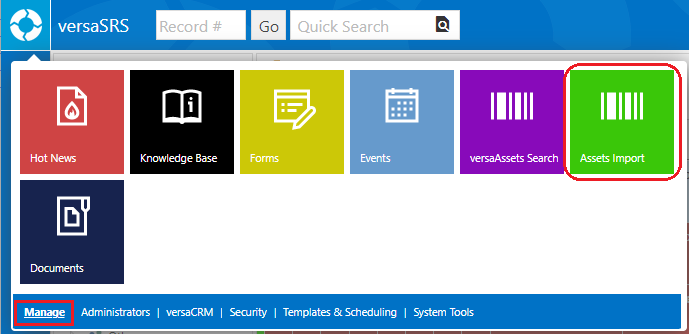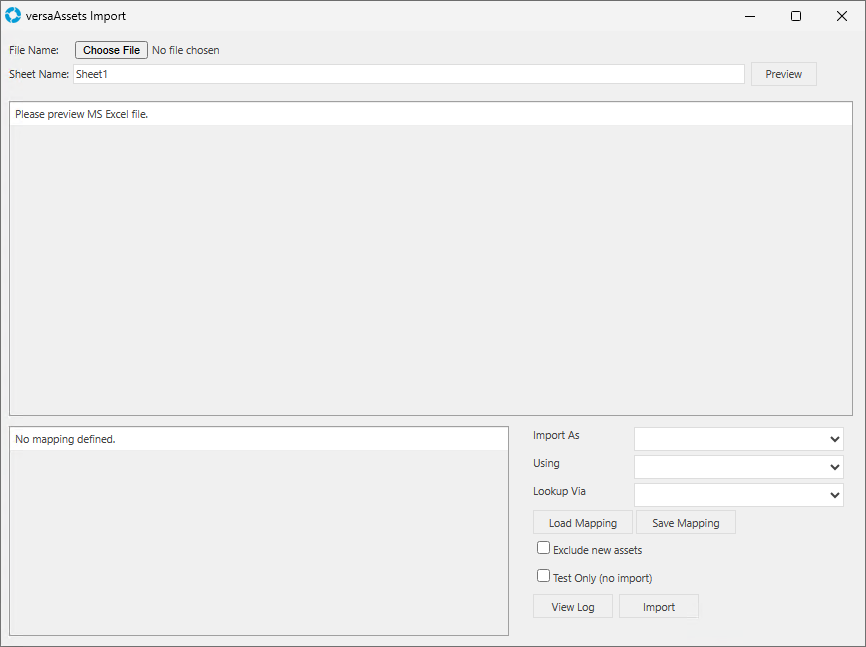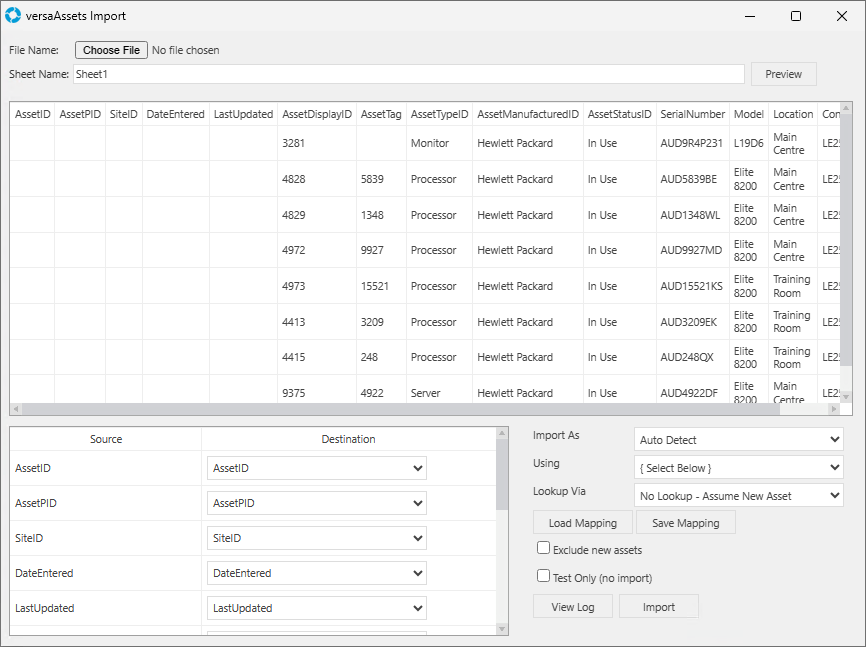Asset Import Tool
The versaAsset Import Tool can used to import a spreadsheet of Assets into versaSRS. The tool can be accessed by selecting the Assets Import icon from the versaSpinner - Manage tab.


The below steps can be followed to import Assets into versaSRS from an Excel spreadsheet.
- Click the Browse button and select the spreadsheet that will be used for the import.
- Ensure that the Sheet Name field is set to the name of the sheet in spreadsheet that will be used for the import.
- Select the Preview button to populate the Assets and allow the mapping to be selected; you may receive an error at this step:
- If it reads "Microsoft.ACE.OLEDB.12.0 provider is not registered on the local machine" you will need to consult this Knowledge Base article.
- If it contains text similar to "Message: 'Sheet1$' is not a valid name." the name of the Sheet in the spreadsheet file does not match the name in the Sheet Name field.
- In the Mapping section the Source will be populated with the fields from the spreadsheet. The Destination fields correspond to fields in the Asset module of versaSRS. You will need to select each of the fields in the Destination column to the correct mapping for each of the fields from the source.
- Mappings can be Saved and Loaded so there is no need to repeat this process provided the source spreadsheet has the same fields when doing another import
- Select one of the options in the Import As drop-down box to determine what kind of Asset you will be importing.
- The Using field specifies the column to search for the selection in the Import As field. For example if the Import As field is set to Laptop then the using field will need to be set to the column that specifies the type of Asset being a Laptop.
- You can use the Lookup Via field to detect the unique identifier for the Asset in the spreadsheet. For example if AssetID is selected then it will use the AssetID field in the spreadsheet for the comparison to the equivalent in versaSRS. If it finds a match then it will do an update rather than insert a new record. By default the Lookup Via field is set to No Lookup - Assume New Asset.
- The Exclude new assets checkbox can be used to only perform updates to existing Assets and not import new records.
- Once the Mapping is complete the import is ready to go and can be executed by clicking the Import button.
- The Test Only checkbox can be used to do a test run that will not update the database. After a test run you can view the log file by clicking View Log to confirm that the import is correct.
